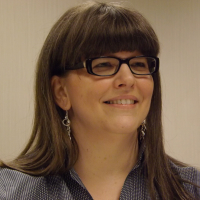The problem with trying to convey the full reality of the occupation for Palestinians is that the occupation is such a vast and unwieldy thing. There’s a natural tendency to focus on the most dramatic details, and in particular the bloody ones, but those details reflect only a part of the staggering whole. The extent of the occupation is sprawling, its bureaucracy Byzantine, and it keeps every aspect of life, both public and private, at the hands of both the State of Israel and Israel’s citizens. There is no moment, no place in a Palestinian’s life, that is in any meaningful sense free of the occupation’s influence.Which brings me to Palestinian olive groves.Last Saturday, as reported by Alon Aviram in +972,
Israeli Border Police declared an area belonging to [the West Bank village of] Susya al-Qadima a closed military zone, effective immediately. An officer waved papers at us and stated that he was legally warranted to force everyone out of the valley. We noticed that the orders were outdated, unsigned, and dictated that only Israelis were prohibited from entering the specified site. This did not stop the temporary expulsion of Palestinian locals.

This happens to Palestinian farmers of all stripes frequently, and entirely randomly—they arrive ready to work their land, only to be told that they are not allowed to so much as step on it. The olive season began on October 6 and in the harvest’s first 18 days, hundreds of farmers had been denied access, or given only very limited access, to olive groves “located behind the Barrier or near settlements.” But even having access is not a guarantee of being able to get the work done: On October 9, Aviram reported, soldiers fired tear gas at harvesters who got “too close to” the chain link fence separating them from the settlement of Adora.
Haaretz reported on October 13 that the Palestinian Authority had, in fact, made arrangements with the IDF for olive farmers to work their settlement-adjacent fields for specified periods of time, under military protection from settler violence, but each village was only given “up to” three days for their harvest, and thus
even though the harvest has only just begun, it is already clear that the limits mean many villagers will not be able to finish the harvests in the areas near the settlements. In some cases, when Palestinian farmers did try to reach their groves they were driven off by settlers.
Which is not surprising, because while the IDF was busy coordinating which days of which week farmers would be allowed onto their own land in order to earn their livelihood, settlers were vandalizing or destroying close to 1,000 trees in the first three weeks of October alone. All told, in the course of 2012 to date, settlers have damaged or killed about 7,500 olive trees.
Why do violent settlers attack trees? Because while they’re violent, they’re not stupid.
Of most immediate urgency is the fact that some 80,000 West Bank families depend on the harvest as their main source of income. Beyond that, however, the cultivation of olive groves reaches back centuries, and trees typically live for 200 years or more. Thus, the olive tree also serves as a potent symbol of Palestinian steadfastness, and the links between generations—as Honi HaMa’agal teaches us regarding his own tree planting in the Talmud: “I found a fruitful world, because my forebears planted for me. Thus I shall do for my children.”
And so, in destroying olive trees, settlers are not only making it as hard as they can for farmers to feed their families, they’re also mocking Palestinian pretentions to belonging to their home.
Declaring victory, and wiping away generations of effort, with one swing of an axe. Or one outdated and unsigned military order.
That’s what the occupation looks like.





